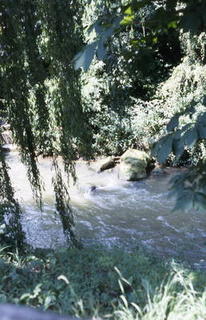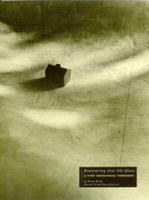
Have you ever heard the river cry?
Sinsheim in Germany Before the Changes: The Elsenz river is straightjacketed between panels of unsustainable forested tropical timber. The water flows too fast for fish and affords no home for aquatic life Summer flash floods sweep away any attempt at life. Non-native acacia roots, growing vertically deep, do not support the riverbank.

See her smile
After Sinsheim City restored the eco-system: Large boulders and stones were thrown in to afford havens in the riverbed and diversify the flow. A flood plain was created so that during flash floods water spread naturally into fields. Native trees with spreading shallow roots were planted at the riverbank to afford homes for small river creatures and maintain the ecosystem of the banks.
Bring Back the Trees
To start your river project...explore what you've got: your bioregion. Below: A great site to begin exploring bioregions and sustainability. Click under exchange and books, scroll down for a great book, Discover your Life-place: A first Bio-regional Workbook, by Peter Berg (featured in this pic)This photo taken from: http://www.planetdrum.org/Default.htm

Clean up the water too
Kariyatagawa River, Niigata, Japan Sixth Graders from Tochio Higashi Elementary School investigate water pollution measuring COD (chemical oxygen demand). Students calculate pollutant loads of discharge water from rinsing rice, shampoo, oil, etc. The kids make soap by recycling deep-frying oil and educate their community, distributing hand- made pamphlets and freebie soap every month. This picture was taken from: http://www2s.biglobe.ne.jp/~kariyata/message1.htm

Listen to the song at http://onegreenleaf.podomatic.com/
Working with this song, children grow in awareness of what makes us happy and sad and empathizing with other humans and the planet. Children can develop the value of solidarity and commitment to a vision of peaceful existence based on a universal framework of human rights and ecological balance. Through exploration of actions such as cleaning the river, children gain a sense of global agency and engagement: they learn to act constructively as global citizens to resolve global problems locally, and achieve a culture of peace. Moreover, the song aims to reaffirm children’s natural sense of empathy and gentleness, nurturing gender-free capacities for caring and co-operating for the common good.